In September 1969, NASA continued preparations for the second Moon landing mission, Apollo 12, scheduled for launch on Nov. 14. The Apollo 12 mission called for a pinpoint landing in Oceanus Procellarum (Ocean of Storms) near where the robotic spacecraft Surveyor 3 had touched down in April 1967, with a stay on the lunar surface for about 32 hours, compared to Apollo 11’s 21 hours, and two surface Extravehicular Activities (EVAs) or spacewalks totaling more than 5 hours. During the first of their two excursions, the astronauts would deploy the Apollo Lunar Surface Experiments Package (ALSEP) and collect some lunar samples, and during the second they would visit Surveyor 3 and remove some of its equipment for return to Earth as well as collect additional lunar samples. The Apollo 12 prime crew of Commander Charles “Pete” Conrad, Command Module Pilot (CMP) Richard F. Gordon, and Lunar Module Pilot (LMP) Alan L. Bean and their backups David R. Scott, Alfred M. Worden, and James B. Irwin were heavily engaged in training for the mission.
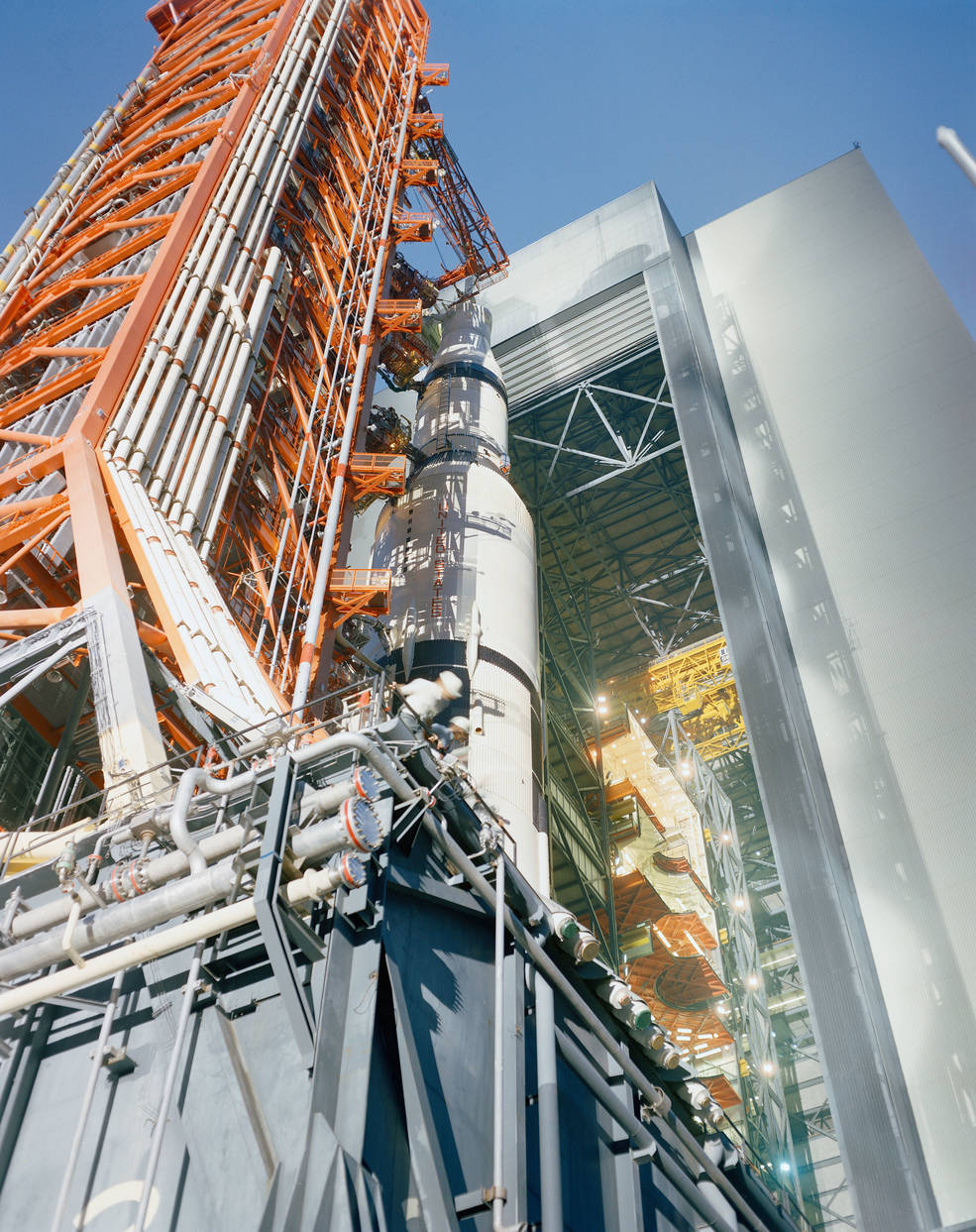
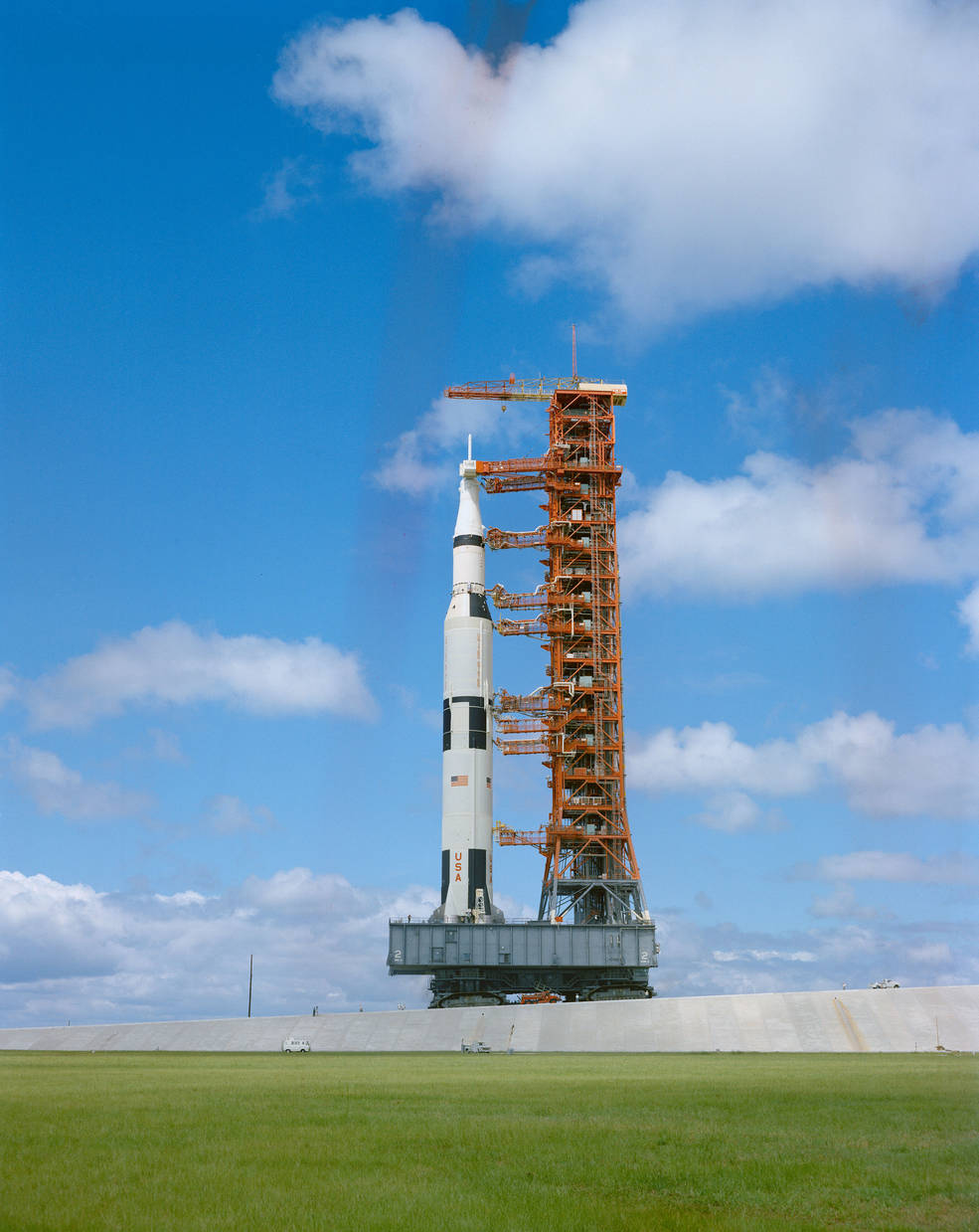
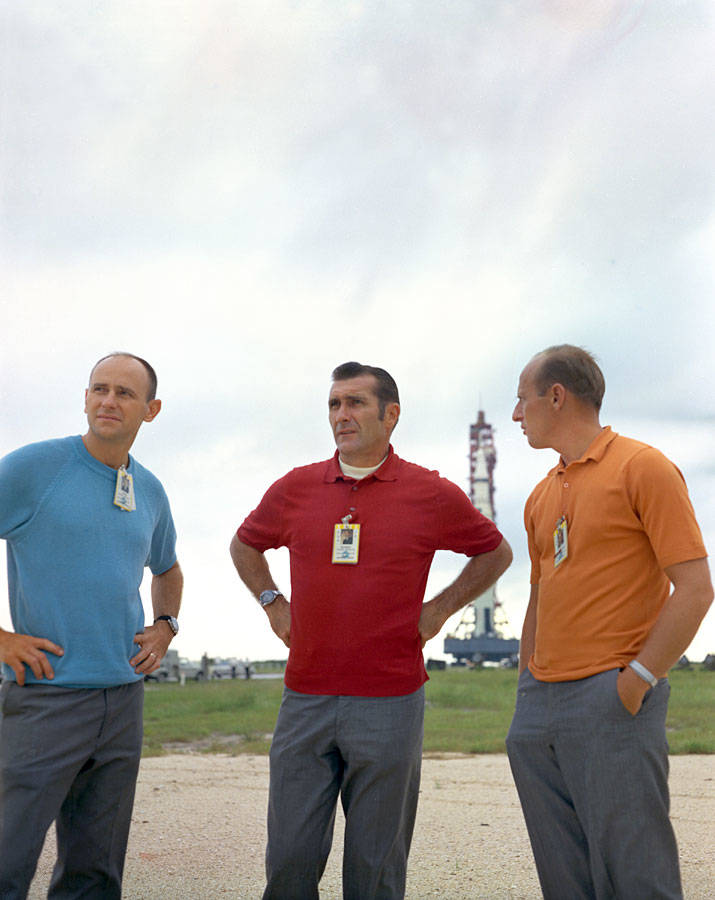
Left: The Apollo 12 Saturn V exits the VAB on its way to Launch Pad 39A.
Middle: The Apollo 12 Saturn V rolling up the incline as it approaches Launch Pad 39A.
Right: Apollo 12 astronauts (left to right) Bean, Gordon, and Conrad pose in front of their Saturn V during the rollout to the pad.
On Sep. 8, the Saturn V rocket with the Apollo 12 spacecraft on top rolled out from Kennedy Space Center’s (KSC) Vehicle Assembly Building (VAB) to Launch Pad 39A. Riding atop the Mobile Launch Platform and the Crawler Transporter, the rocket made the 3.5-mile trip to the pad in about 6 hours. Conrad, Gordon, and Bean were on hand to observe the rollout. Workers at the pad spent the next two months thoroughly checking out the rocket and spacecraft to prepare it for its mission to the Moon. The two-day Flight Readiness Test at the end of September ensured that the launch vehicle and spacecraft systems were in a state of flight readiness. Ground systems provided power to the launch vehicle during the test, but all electrical connections on the rocket itself were as if during flight.
In preparation for their mission, the Apollo 12 astronauts spent many hours in the Command Module (CM) and Lunar Module (LM) simulators at both KSC and the Manned Spacecraft Center (MSC), now the Johnson Space Center in Houston. In addition, Conrad and Bean as well as their backups Scott and Irwin rehearsed their lunar surface EVAs including the visit to Surveyor 3. Workers at the Jet Propulsion Laboratory in Pasadena, California, shipped an engineering model of the robotic spacecraft to KSC. For added realism, engineers there mounted the model on a slope to match its relative position on the interior of the crater in which it stood on the Moon.
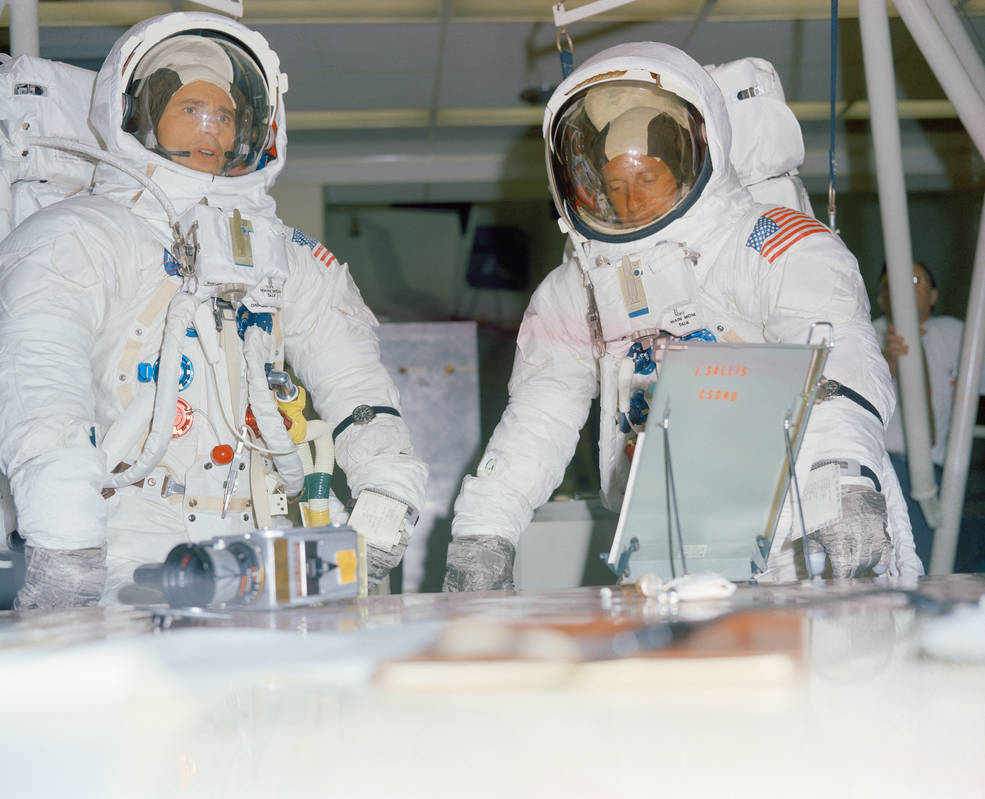
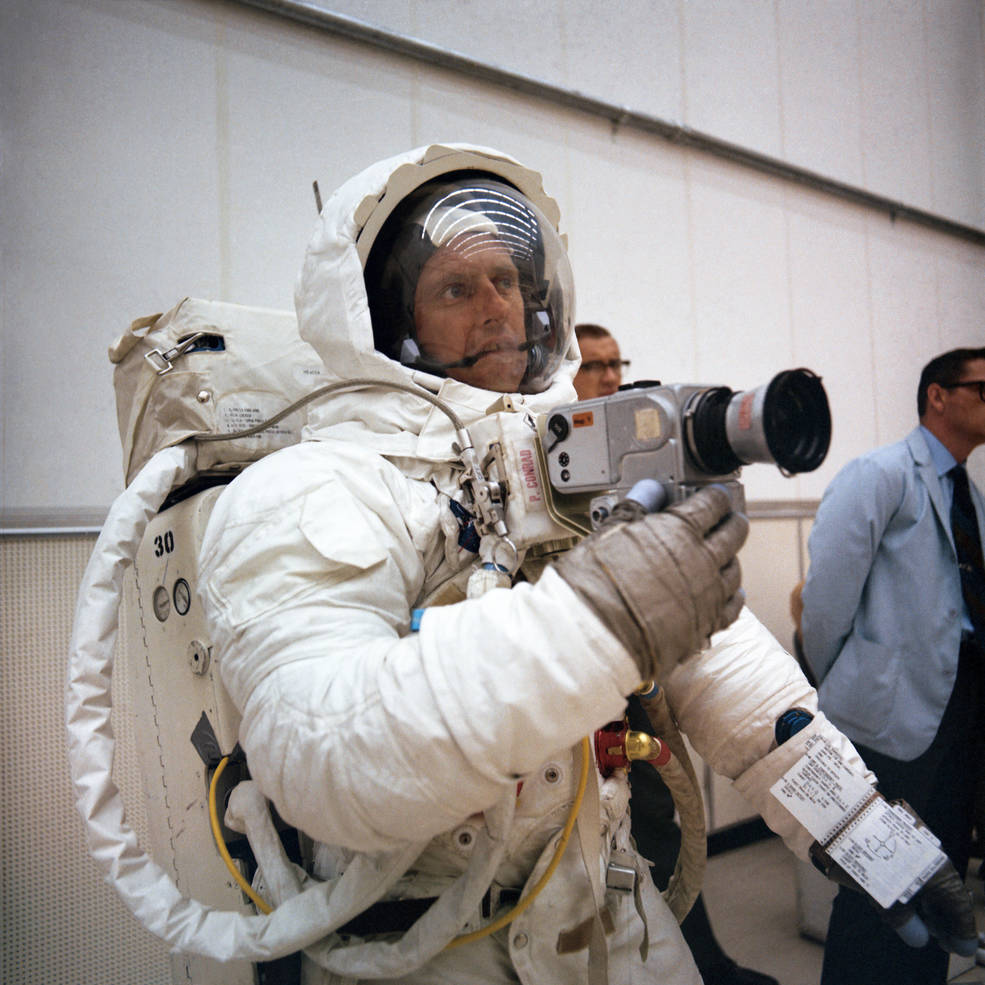
Left: Apollo 12 astronauts Bean (left) and Conrad rehearse their EVAs at KSC.
Right: Apollo 12 Commander Conrad trains in the use of the Hasselblad camera they will use on the Moon.
With regard to lunar geology training, one advantage the Apollo 12 astronauts had over their predecessors was the ability to actually inspect Moon rocks and soil returned by the Apollo 11 crew. On Sep. 19, Conrad and Bean arrived at the Lunar Receiving Laboratory at MSC, where Lunar Sample Curator Daniel H. Anderson met them. Anderson brought a few lunar rocks and some lunar soil that scientists had already tested and didn’t require to be stored under vacuum or other special conditions, allowing Conrad and Bean to examine them closely and compare them with terrestrial rocks and soil they had seen during geology training field trips. This first hand exposure to actual lunar samples significantly augmented Conrad and Bean’s geology training. To highlight the greater emphasis being given to lunar surface science, the Apollo 12 crews (prime and backup) went on six geology field trips compared to just one for the Apollo 11 crews.
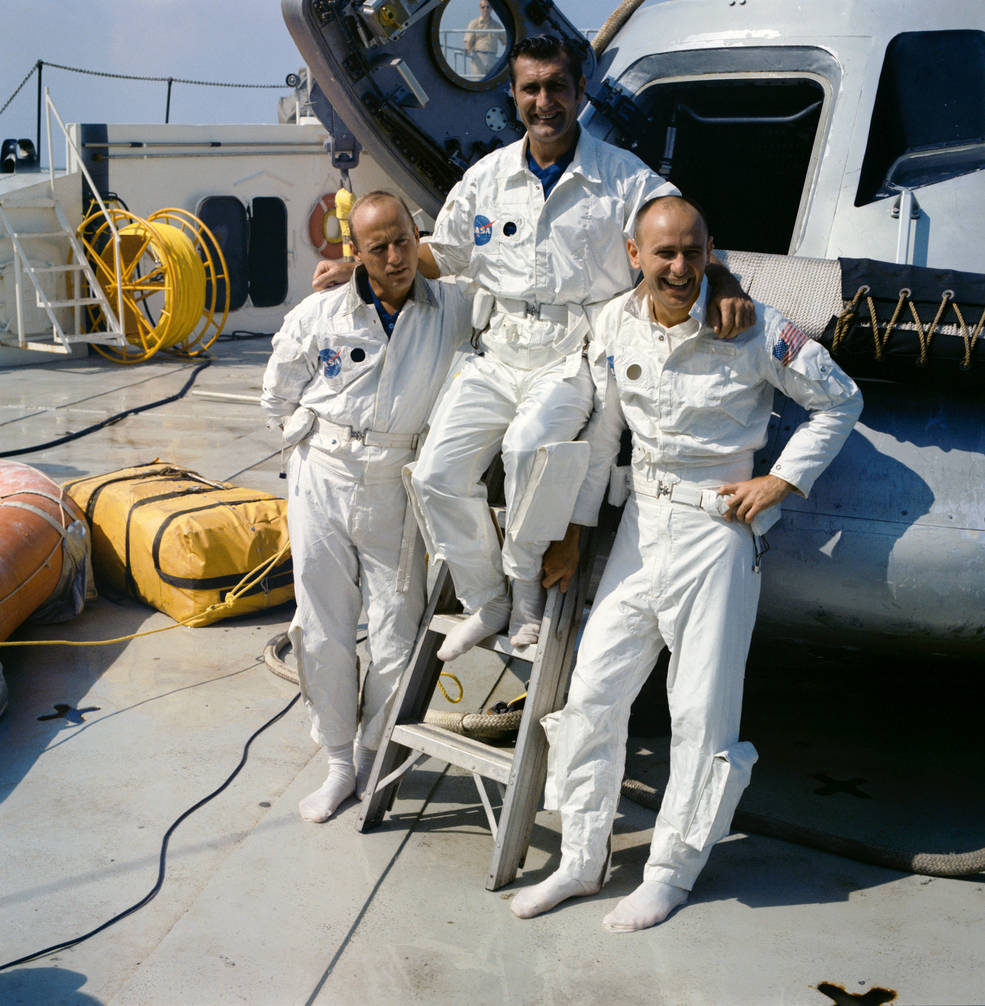
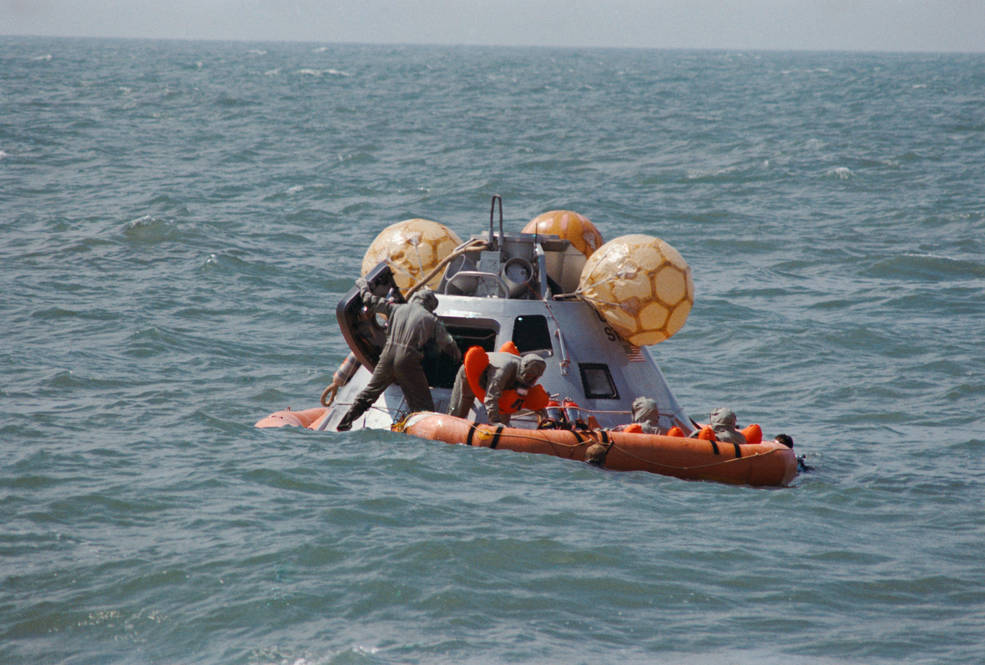
Left: Apollo 12 astronauts (left to right) Conrad, Gordon, and Bean preparing for the water egress
training aboard the MV Retriever. Right: Wearing BIGs and assisted by a decontamination
officer (standing in the open hatch), Apollo 12 astronauts await retrieval in the life raft.
Although the Apollo 11 astronauts returned from the Moon in excellent health and scientists found no evidence of any harmful lunar microorganisms, NASA managers still planned to continue the postflight quarantine program for the Apollo 12 crewmembers, their spacecraft, and the lunar samples they brought back. The first of these measures involved the crewmembers donning Biological Isolation Garments (BIG) prior to exiting the spacecraft after splashdown. Since the crew didn’t carry the BIGs with them to the Moon and back, one of the recovery personnel, also clad in a BIG, opened the hatch to the capsule after splashdown and handed the suits to the astronauts inside, who donned them before exiting onto a life raft. On Sep. 20, the Apollo 12 astronauts rehearsed these procedures, identical to the ones used after the first Moon landing mission, in the Gulf of Mexico near Galveston, Texas, using a boilerplate Apollo CM and supported by the Motorized Vessel (MV) Retriever. As it turned out, NASA later removed the requirement for the crew to wear BIGs, and after their splashdown the Apollo 12 crew wore overalls and respirators.
Preparations for Apollo 13 were also well underway. In KSC’s Manned Spacecraft Operations Building (MSOB), Apollo 13 astronauts completed altitude chamber tests of the CM and LM for their mission. Prime crewmembers Commander James A. Lovell, CMP Thomas K. Mattingly, and LMP Fred W. Haise completed the altitude test of the CM on Sep. 10, followed by their backups John W. Young, Jack L. Swigert, and Charles M. Duke on Sep. 17. The next day, Lovell and Haise completed the altitude test of the LM, followed by Young and Duke on Sep. 22. At the time of these tests, Apollo 13 was scheduled for a March 12, 1970, launch to visit the Fra Mauro highlands region of the Moon. To prepare for their lunar surface excursions, Lovell, Haise, Young, and Duke, accompanied by geologist-astronaut Harrison H. “Jack” Schmitt and Caltech geologist Leon T. “Lee” Silver, spent the last week of September in Southern California’s Orocopia Mountains immersed in a geology boot camp.
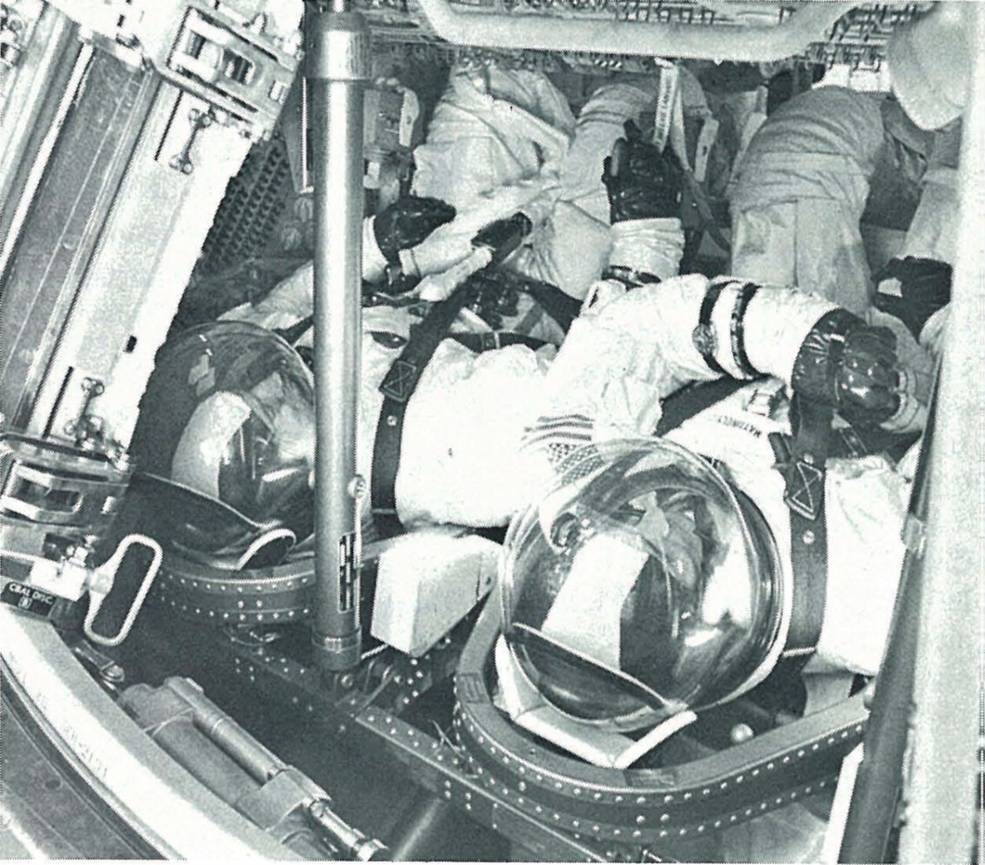
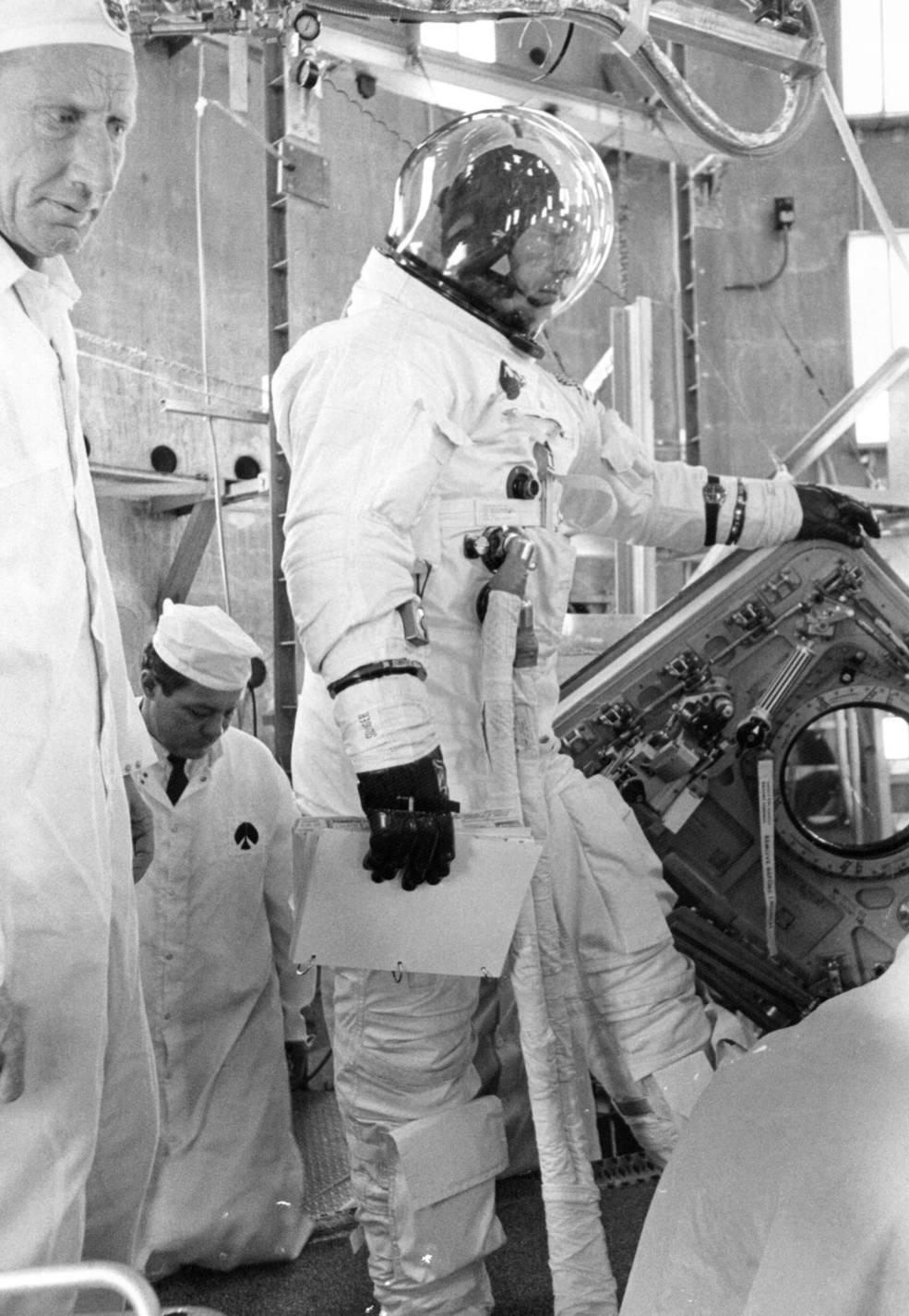
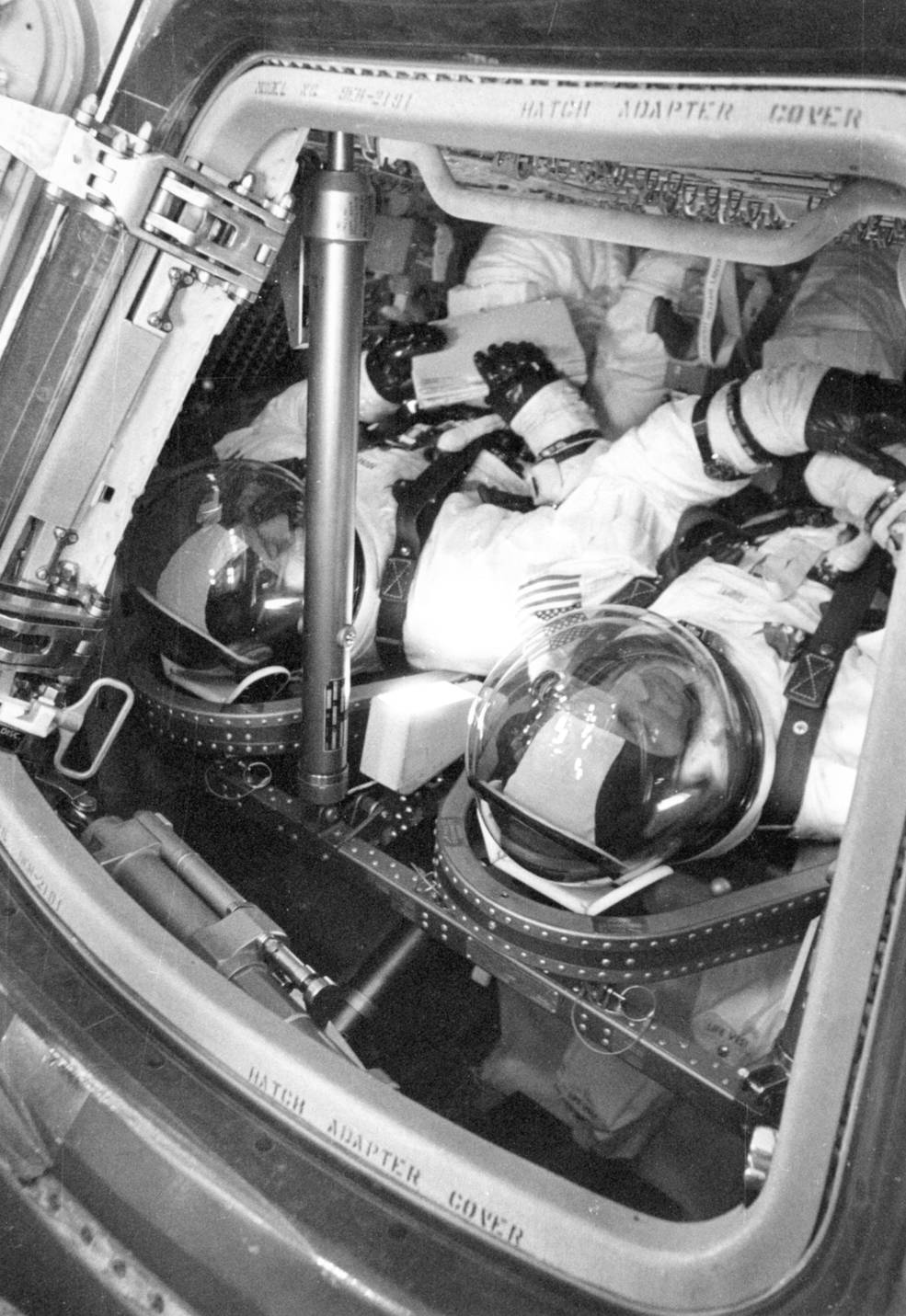
Left: Apollo 13 prime crewmembers (left to right) Lovell and Mattingly in the CM for an altitude
chamber test – Haise is out of the picture at right. Middle: Apollo 13 backup astronaut Swigert prepares
to enter the CM for an altitude chamber test. Right: Apollo 13 backup crewmembers (left to right) Young and
Swigert in the CM for an altitude chamber test – Duke is out of the picture at right.


























